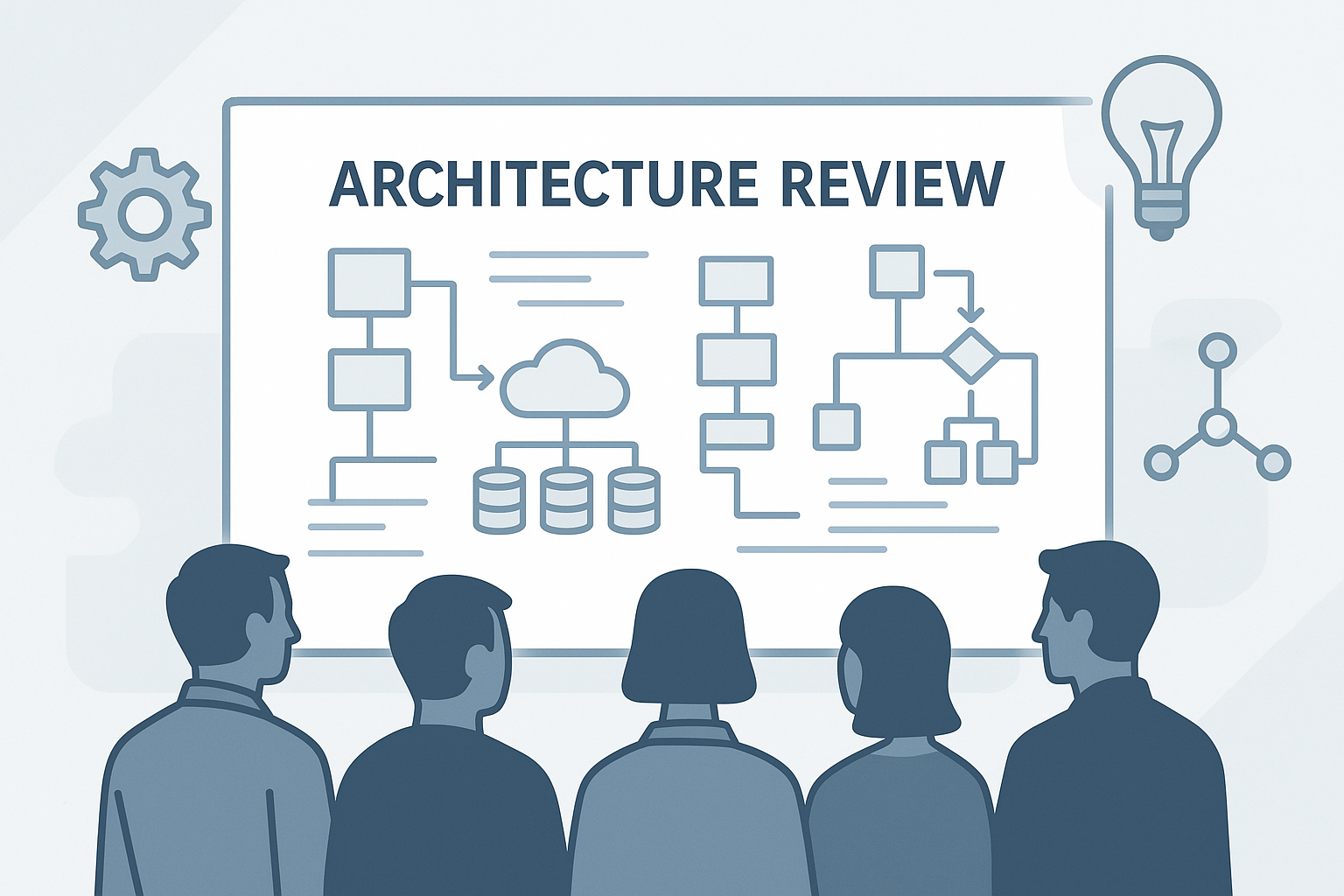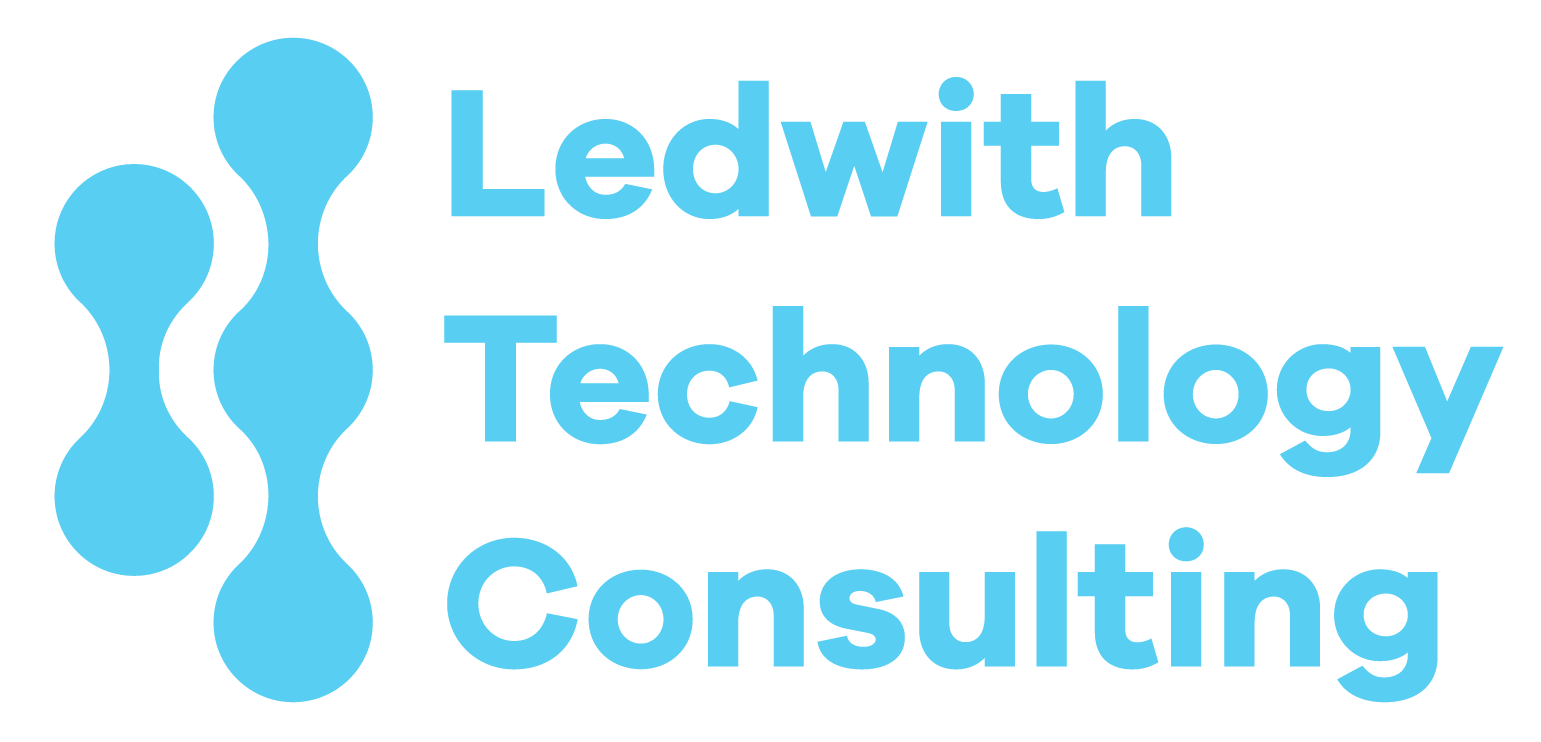By Stephen Ledwith July 9, 2025
Engineering orgs hit an inflection point when architectural decisions stop being tribal knowledge and start needing structure.
The question is: how do you review architecture without introducing committee-driven gridlock?
“Architecture isn’t a phase. It’s a conversation that never ends.”
— Stephen Ledwith
This post offers a pragmatic framework to run effective, lightweight architecture reviews that improve technical decisions, build alignment, and respect your team’s time.
Why Architecture Reviews Get a Bad Rap
Architecture reviews have earned a reputation for being:
- Bureaucratic
- Time-consuming
- Disconnected from real delivery
- Biased toward legacy patterns
But these are failures of design, not of necessity.
Done right, reviews can accelerate delivery—by preventing rework, clarifying trade-offs, and ensuring cross-team alignment.
🎧 Related Insight: In Episode 6 of The Architect and The Executive, the hosts emphasize:
“Governance is important! You need to think about how you’re going to do reviews and create standards; What’s your plan for architecture?”

When to Review Architecture
Not every change needs a full review.
Here’s a simple rule I’ve used in scaling orgs:
📢 Callout: If a decision affects more than one team, introduces new patterns, or carries long-term operational risk, it’s worth reviewing.
Examples:
- New service boundaries or API contracts
- Database or messaging architecture shifts
- New cloud provider or platform capabilities
- Cross-team dependency introduction
- Critical security or data privacy decisions
The Lightweight Architecture Review Framework
Here’s a format I’ve used in orgs from 10 to 100+ engineers:
1. Architecture One-Pager
Engineers fill out a short doc answering:
- What problem are we solving?
- What options were considered?
- What trade-offs are involved?
- How does this scale? How does this fail?
- What do we need feedback on?
“Architecture docs don’t need to be beautiful. They need to be clear, opinionated, and honest.”
— Stephen Ledwith
2. Async Peer Review
Send the doc to a trusted architecture group (ideally engineers, not just managers) for 48–72 hours of async feedback.
This keeps meetings rare and focused.
3. Optional Live Review
Only if unresolved questions remain or the impact is wide. Timebox to 30 minutes.
Focus on:
- Clarifying assumptions
- Raising blind spots
- Aligning on principles—not dictating solutions
What Makes a Good Reviewer?
“Great reviewers ask better questions than they give answers.”
— Tanya Reilly, Author of The Staff Engineer’s Path
Your reviewers should:
- Bring a system-wide perspective
- Be empathetic to delivery context
- Avoid tech elitism (“just use Rust!”)
- Prioritize clarity over cleverness
- Respect team autonomy
📢 Callout: Rotate review participants to share knowledge and avoid architectural gatekeeping.
🎧 Related Insight: In Episode 3, the podcast explores how architectural integrity is reinforced through planning and shared context:
“Defensive Programming is more than error checking. It’s about planning, architecture diagrams, shared context—all parts of the SDLC help improve code.”
Scaling the Review Process
As your org grows, make sure your process does too:
| Stage | Process Focus |
|---|---|
| 10–20 Engineers | Ad hoc discussions, whiteboards |
| 20–50 Engineers | One-pager template, async reviews |
| 50–100+ Engineers | Dedicated tech council, clear ownership boundaries |
Common Pitfalls and How to Avoid Them
1. Over-engineering for every decision
Solution: Define when reviews are required vs. optional.
2. Reviewers disconnected from implementation
Solution: Prioritize reviewers who’ve shipped production systems recently.
3. Lack of follow-through
Solution: Ensure feedback is tracked and decisions documented post-review.
My Experience: Reviews as Accelerators, Not Anchors
At Zillow and in multiple startups, I’ve seen architecture reviews used as levers of clarity, alignment, and culture building—when they’re grounded in respect for speed and craft.
The best outcomes came when teams saw reviews not as a gate, but as a trusted sounding board—a fast way to pressure-test assumptions before going too far.
Done right, reviews build shared understanding, elevate decision-making, and reduce painful rewrites.
Final Thought
Architecture reviews don’t have to be slow, formal, or feared. They just need to be useful.
Create a structure that engineers trust, keep it lean, and use it to amplify—not inhibit—your team’s ability to build great things.
“Good process is invisible. Great architecture emerges when you make space for people to think together.”
— Stephen Ledwith
Citations
- Tanya Reilly, The Staff Engineer’s Path, O’Reilly Media
- Thoughtworks Tech Radar 2024, “Lightweight architecture decision records”
- Charity Majors, “Being Glue”, https://charity.wtf
- The Architect and The Executive, Episode 3, “Defensive Programming”
- The Architect and The Executive, Episode 6, “Low Code at Scale”



